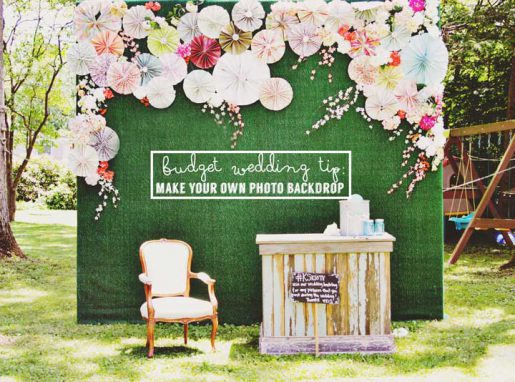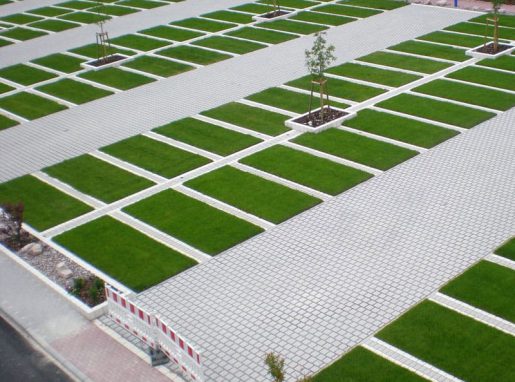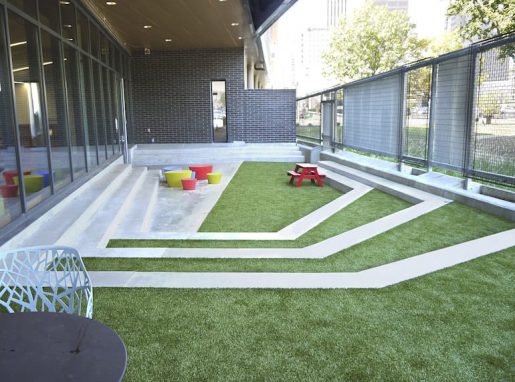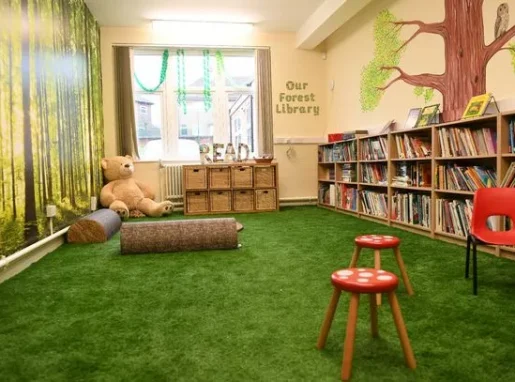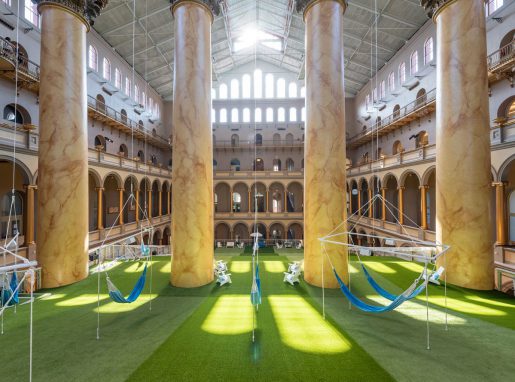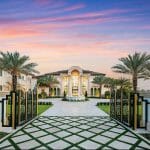Enhancing Green Spaces: The Benefits of Using Artificial Grass in Residential Communities
Residential communities are often characterized by their beautifully landscaped green spaces, which play a vital role in creating an inviting and aesthetically pleasing environment for residents. When it comes to greenery, many community developers are now turning to artificial grass as a versatile and low-maintenance alternative to natural grass. In this article, we will explore the benefits of using artificial grass in residential communities and how it can enhance the overall appeal and functionality of the green spaces.

1. Aesthetically Pleasing and Consistently Green:
Artificial grass offers a lush and vibrant green appearance throughout the year, regardless of weather conditions or maintenance efforts. It provides a consistently green and well-maintained look that enhances the overall visual appeal of the residential community. Whether it’s a small common area or a larger park, artificial grass creates an inviting and fresh atmosphere that residents can enjoy.
2. Low Maintenance and Cost-effective:
One of the key advantages of artificial grass in residential communities is its low maintenance requirements. Unlike natural grass that requires regular mowing, watering, and fertilizing, artificial grass eliminates the need for these time-consuming tasks. It saves both time and money on maintenance costs, allowing community managers to allocate resources to other important aspects of community development and upkeep.
3. Durability and Longevity:
Artificial grass is designed to withstand heavy foot traffic and various weather conditions, making it an ideal choice for residential communities with high usage areas such as playgrounds, sports fields, and communal gathering spaces. It maintains its pristine appearance even with constant use, ensuring that residents can enjoy the green spaces without worrying about wear and tear.
4.Water Conservation:
Water scarcity is a concern in many regions, making it important for residential communities to prioritize water conservation. Artificial grass requires no watering, reducing the community’s overall water consumption. This eco-friendly feature not only contributes to water conservation efforts but also helps reduce utility costs for the community.
5. Versatility in Design and Use:
Artificial grass offers design versatility, allowing landscape architects and community developers to create various green spaces tailored to residents’ needs. Whether it’s a serene garden, a vibrant playground, or a functional sports field, artificial grass can be customized to fit the desired aesthetic and purpose of each area. It provides a soft and comfortable surface for recreational activities, making it ideal for children’s play areas and outdoor fitness zones.
Conclusion:
Incorporating artificial grass into residential community green spaces brings numerous benefits, from its aesthetic appeal and low maintenance requirements to its durability and water conservation advantages. By choosing artificial grass, community developers can create visually appealing and functional green spaces that enhance the overall quality of life for residents. Whether it’s a small-scale housing complex or a larger gated community, artificial grass provides an efficient and sustainable solution for achieving attractive and well-maintained green areas in residential settings.
Design Concepts for Artificial Grass in Commercial Parking Lots
- Permeable and Sustainable Surfaces
- Designated Green Spaces
- Safety and Comfort
- Traffic Control and Wayfinding
- Branding and Aesthetic Enhancement
- Low Maintenance and Cost-Efficiency
Green Tranquility: Artificial Grass Elevates Dayton Metro Library’s Outdoor Oasis
- Nature Amidst Knowledge
- Year-Round Green
- Comfortable Retreat
- Community Engagement Spaces
- Sustainable Landscaping
- Ease of Maintenance
- Aesthetic Harmony
Forest-Inspired Library Transforms with Artificial Grass at St Maria Goretti Catholic Academy
- Nature's Touch
- Synthetic Serenity
- Whimsical Seating
- Minimal Maintenance, Lasting Appeal
- Reading Retreat
- Imaginations Awakened
Artificial Grass Design at the National Building Museum: A Green Oasis in the Heart of Architecture
- Aesthetic Harmony
- Sustainable Elegance
- Year-Round Appeal
- Public Recreation Spaces
- Versatile Applications
- Safety and Accessibility
- Educational Significance
Artificial Grass in Paintball: Enhancing the Paintball Experience
- Durable and Resilient
- Consistent Surface
- All-Weather Play
- Low Maintenance
- Player Safety


